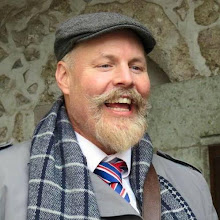



Pictures are:
1. In front of the Musee de Verdun at the entrance to the memorial grounds.
2. The Islamic headstones, facing Mecca, of some of the many thousands of Morrocan, Algerian, and other French colonial citizens who came to Europe to fight for France in WWI.
3. The imposing ossuary of Verdun.
4. Crosses of Verdun.
Verdun. Of the many prolonged, bloody battles of WW I, perhaps none conjures up as much horror as Verdun. The battlefields of Verdun claimed the lives of 700 000 men, primarily French and German. Acres and acres of land is fenced off with warnings because not hundreds or thousands but millions of unexploded shells and mines litter the ground here, nearly a century later. The landscape, like that around Vimy, is cratered, but the lush growth hides the fact that by the end of 1918, this farming area and its 13 quaint French country villages was just mud and a few stumps. We watched a short film about Verdun, with many powerful quotes from soldiers of The Great War, as we drove through the countryside on the approach to the memorial park. The kids explored the small Verdun museum, followed by stops at the destroyed village of Fleury, where only the chapel was rebuilt and simple markers show you where the streets and buildings were, the Douamont Ossuary, which houses the bones of 130 000 French and German soldiers collected from the battlefield after the war, and the Trench of the Bayonettes, where a group of French soldiers was buried alive by German artillery fire, their bayonettes still pointed up as they awaited orders to go over the top into no man’s land.
Interesting side note: as we entered Paris, the kids asked why the flags were all at half mast. We found out that the last of 8.4 million French soldiers to fight in the First World War had died a couple days before. Lazare Ponticelli (born in Italy, but a French citizen and soldier) had no idea when he signed up to fight for France at age 16, he would be, at 110, the last of those soldiers to die.
Craig
Interesting side note: as we entered Paris, the kids asked why the flags were all at half mast. We found out that the last of 8.4 million French soldiers to fight in the First World War had died a couple days before. Lazare Ponticelli (born in Italy, but a French citizen and soldier) had no idea when he signed up to fight for France at age 16, he would be, at 110, the last of those soldiers to die.
Craig

No comments:
Post a Comment